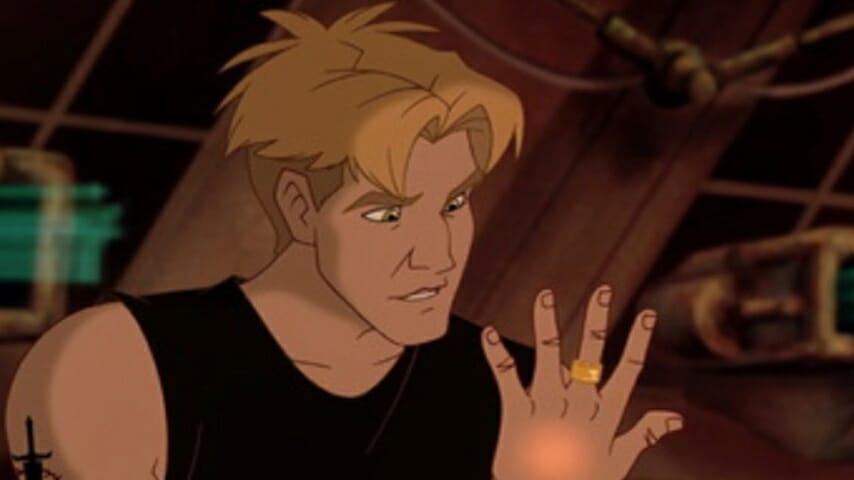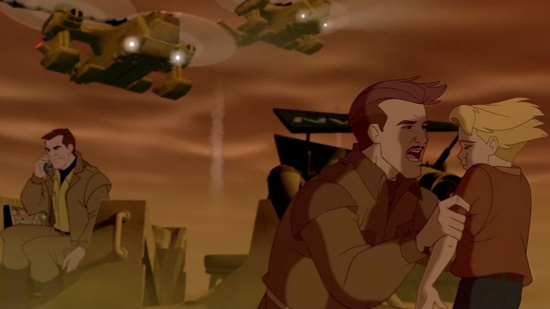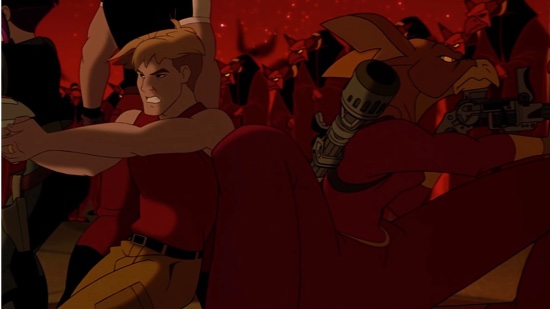Don Bluth Gave It One Last Try with Titan A.E.
The animation director’s last hurrah turns 20.

Most artists would probably tell you that they hope their last work is their best work, that their final project is something reflective of everything they’ve learned, every failure or setback they’ve suffered, every discovery that got them to where they are. Titan A.E., the bafflingly star-studded (as of now) final feature-length film of legendary animation director Don Bluth, is very much not that. It is not his best work, not his most unforgettable or distinctive work, and not at all a distillation of the style that, for a couple decades, represented an alternative to Disney.
As the movie turns 20, it is currently Bluth’s last work. Despite being an idea he was handed rather than one he came up with himself, it still features some of the man’s directorial hallmarks. Bluth was trying out new stuff, going for a different type of story than he’d told before, and by virtue of his position heading up Fox Animation Studios, the movie had major studio clout behind the whole operation.
It nevertheless failed, and brought about the end of Fox Animation Studios—and has for 20 years more or less marked the end of Bluth’s influence on mainstream animation. I can’t help but look back at the 20 years between now and his last feature and think about how the industry has changed since.

In the 31st century, Earth is under imminent attack by an alien species, the Drej. The young boy Cale escapes moments before the planet is entirely destroyed, scattering humanity to the far reaches of the universe. The film picks up as Cale (now voiced by Matt Damon) has reached adulthood as a cynical blue-collar worker, ground down by a life of being treated as a second class citizen. (Having your planet blown up tends to have that effect on a species, as Cale puts it.)
The story falls right into the beats of a Campbell/Lucas hero’s journey, as Cale survives a Drej attempt on his life and reluctantly falls in with fellow human drifter Korso (Bill Pullman, reporting for alien-stomping duty right on the heels of Independence Day). Cale is the chosen one—his DNA unlocks a map that leads to the Titan, a ship created by his father (Ron Perlman) that has freaked out the Drej so much they’ll do anything necessary to exterminate what remains of humanity.
Korso captains a ship crewed by assorted riff-raff who are all weird aliens voiced by Jeanane Garofalo, John Leguizamo and Nathan Lane, and fellow human and obvious love interest Akima (Drew Barrymore). The performances are all distinctive, and the characters memorable even if they aren’t given too much time to develop. The crew races off to fill in the gaps of Cale’s map, constantly running and gunning through swarms of Drej as they do. There are a few imaginative set pieces along the way, but as unique as they look, it doesn’t do much to get over a mostly predictable story. Cale is Luke Skywalker with a slightly more cynical layer of grunge on him. At least one of the double-crosses in the last reel of the film doesn’t make much sense and is immediately backpedaled anyhow. The Drej (rendered entirely in computer-generated 3D) suffer both from looking dated and from being completely faceless and uninteresting as villains.

